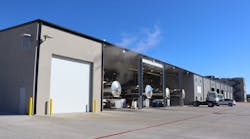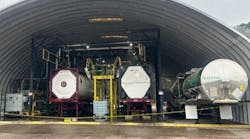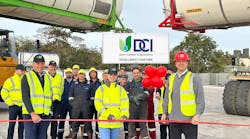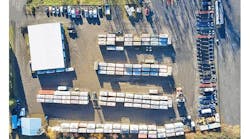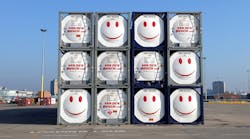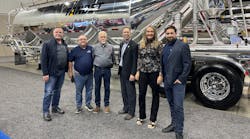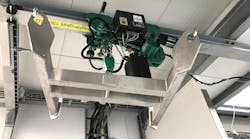When specifying a hoist for use in industrial applications that demand beam-traversing motion, attention should also be paid to the trolley on to which the hoist hooks. According to JD Neuhaus (JDN), trolley factors such as carrying capacity, ease of installation, explosion protection, and ability to negotiate curves must all be considered if the application is to be optimized.
Three versions are available to facilitate the lateral motion of suspended loads: manual trolleys (LN) for pushing or pulling by hand; reel chain trolleys (LH) for moving by unwinding the reel chain; and motorized trolleys (LM) powered by an air motor.
While the standard industrial series stops at a single 20 metric tonne trolley, higher capacities can be achieved with the benefit of 8 wheel and even 16-wheel systems. Additionally, custom designs or utilization of the monorail series offer traversable load placement for the entire JDN catalogue of capacities up to 100 metric tonnes.
Importantly, for suitability in hazardous areas, all JDN trolleys offer explosion protection to Ex II 2 GD IIA T4/II 3 GD IIB T4 classifications. Higher classifications are available on request. For instance, with even further increased spark protection for explosion group IIC, the trolleys incorporate running wheels and travel gearing manufactured in bronze for an impressive EX II 2 GD IIC T4 rating.
Careful design and development by JDN’s expert team has led to a host of industry-leading standard features, whereby the company’s trolleys have become synonymous with ease of installation and a robust structure that requires little maintenance. Anti-climb and anti-drop devices are also included as standard. Trolleys are designed to tackle all sorts of unique applications which can include curved beams.
Some applications have restricted headroom, which is why JDN also offers a special-purpose series of low-headroom trolleys, meaning tight load placements can still traverse economically utilizing JDN’s special low-headroom design. The standard range offers carrying capacities from 0.5 to 6.3 metric tonne, with higher capacities available for custom built projects. This alongside other JDN traversing solutions creates a multitude of trolley capabilities.
Also able to negotiate overhead rail curvature, JDN’s low-headroom trolleys feature extended tie bars for bulky or elongated loads. The same options and energy feeding systems available for JDN’s standard trolley range, can also be offered to users of low-headroom versions, with the addition of hose trolley energy feeding to the list of choices.
All hoists and trolleys can be remotely controlled by the recently introduced JDN radio control systems, offering ease of use and convenience. The remote controls are an effective alternative to where long control hoses are required and for use in hard-to-reach areas, providing simultaneous control of multiple hoists and trolleys. Comprising a transmitter and receiver, the JDN-RC (Remote Control) is available for both new and retrofit applications.
